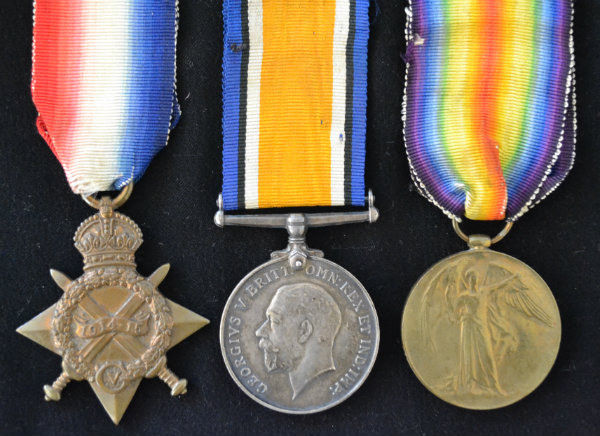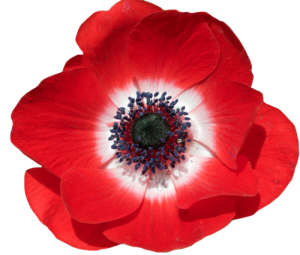Personal Details
Born in Adderley, Shropshire in 1887 (baptised 30th September 1887), the third son of Arthur and Elizabeth Harding of Spoonley, Market Drayton, Shropshire.
Husband to Caroline Harding (known as Carrie) (nee Smith) (married 28th October 1910) of 39 Ash Parva, Whitchurch, Shropshire and father to Alexander (born 19th February 1912), Eva (born 16th August 1913) and Doris (born 7th January 1915).
The 1911 Census shows Charles as a farm waggoner.
Caroline Harding was born in Tilstock, Shropshire, thus creating the link to the Tilstock memorial.
Military Details
Regiment : 1st Battalion Scots Guards
Rank : Private
Service Number : 6391
Killed in Action; Belgium 29 October 1914 Aged 27

The 1914 Star (also known as 'Pip') was authorised under Special Army Order no. 350 in November 1917 and by an Admiralty Fleet Order in 1918, for award to officers and men of the British and Indian Expeditionary Forces who served in France or Belgium between 5 August and midnight of 22–23 November 1914. The former date is the day after Britain's declaration of war against the Central Powers, and the closing date marks the end of the First Battle of Ypres.
The 1914–15 Star (also known as 'Pip') was instituted in December 1918 and was awarded to officers and men of British and Imperial forces who served against the Central European Powers in any theatre of the Great War between 5 August 1914 and 31 December 1915. The period of eligibility was prior to the introduction of the Military Service Act 1916, which instituted conscription in Britain.
The British War Medal (also known as 'Squeak') was a silver or bronze medal awarded to officers and men of the British and Imperial Forces who either entered a theatre of war or entered service overseas between 5th August 1914 and 11th November 1918 inclusive. This was later extended to services in Russia, Siberia and some other areas in 1919 and 1920. Approximately 6.5 million British War Medals were issued. Approximately 6.4 million of these were the silver versions of this medal. Around 110,000 of a bronze version were issued mainly to Chinese, Maltese and Indian Labour Corps. The front (obv or obverse) of the medal depicts the head of George V. The recipient's service number, rank, name and unit was impressed on the rim.
The Allied Victory Medal (also known as 'Wilfred') was issued by each of the allies. It was decided that each of the allies should each issue their own bronze victory medal with a similar design, similar equivalent wording and identical ribbon. The British medal was designed by W. McMillan. The front depicts a winged classical figure representing victory. Approximately 5.7 million victory medals were issued. Interestingly, eligibility for this medal was more restrictive and not everyone who received the British War Medal ('Squeak') also received the Victory Medal ('Wilfred'). However, in general, all recipients of 'Wilfred' also received 'Squeak' and all recipients of The 1914 Star or The 1914/1915 Star (also known as 'Pip') also received both 'Squeak' and 'Wilfred'. The recipient's service number, rank, name and unit was impressed on the rim.
Further Information
Report on the death of Charles Harding in De Ruvigny’s Roll of Honour 1914 – 1919
“HARDING, CHARLES, Private, No. 6391, 1st Battn. Scots Guards; b. Adderley, co. Salop; enlisted 8 Jan. 1906; served with the Expeditionary Force; killed in action 29 Oct. 1914. He m. 28 Oct. 1910, Carrie Smith, and had three children: Alexander, b. 19 Feb. 1912; Eva b. 16 Aug 1913, and Doris b. 7 Jan. 1915.”
De Ruvigny’s Roll of Honour 1914 – 1918
If you can provide any further information on Charles Harding please get in touch by leaving a comment below, using our Contact Form or by calling in to Whitchurch Heritage Centre.
Information provided by Whitchurch Museum and Archives


